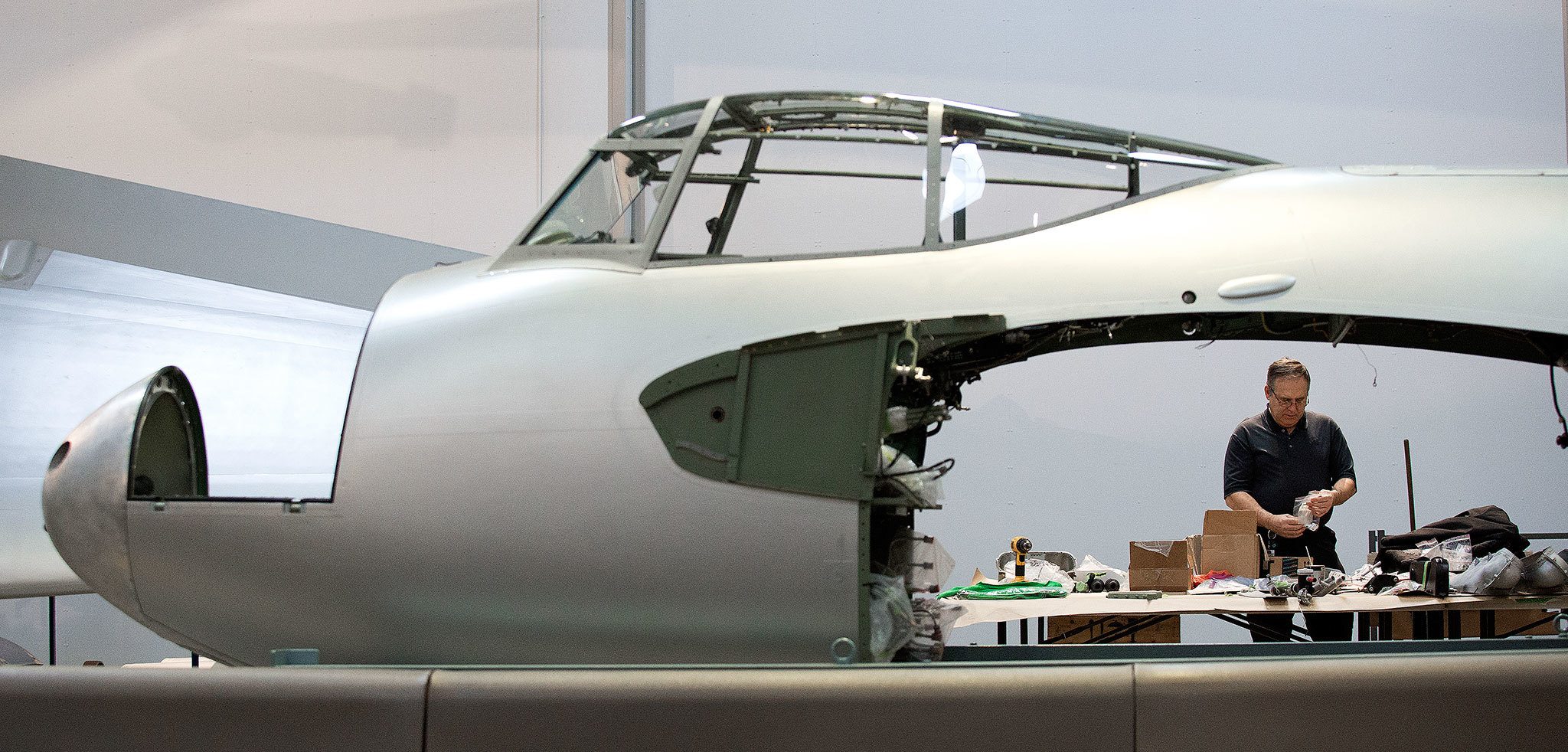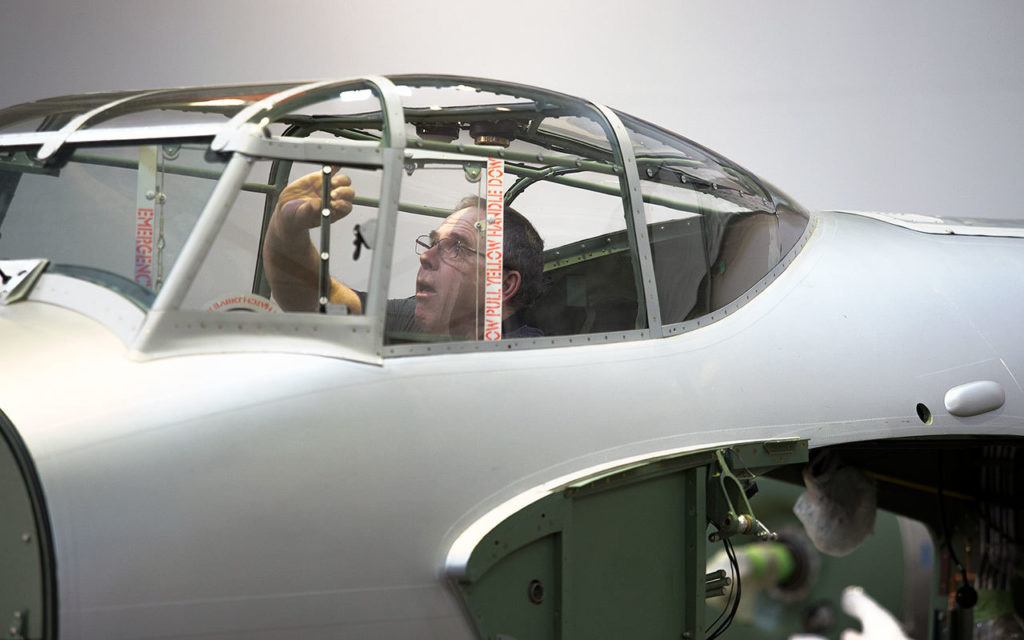EVERETT — The airplane is in parts — fuselage, wings, engines, control cables, propellers laid out in a hangar corner at the Flying Heritage Collection at Paine Field.
The de Havilland Mosquito is the museum’s newest addition — and a legendary aircraft from World War II. The sleek, twin-engine airplane was a racehorse in the sky and excelled in nearly every way it was put to use: as a fighter, bomber, photo reconnaissance, to name a few.
More than 7,700 were built. Yet, at most three are still flying, including the one being reassembled at the Flying Heritage Collection.
The aircraft arrived in December following years of restoration in New Zealand. Visitors can watch mechanics put it back together over the coming weeks. After it is painted to match how it looked in the 1940s, the airplane is expected to take to the sky in the spring.
“There was awhile when there were no flying Mosquitoes,” said Cory Graff, the museum’s military aviation curator.
A 1996 crash during an airshow in England destroyed the only airworthy Mosquito at the time. The pilot and navigator died in the accident.
The airplane lost in the crash actually served alongside the Flying Heritage Collection’s Mosquito during the 1950s. They were trainers — the last two in service with the Royal Air Force (RAF).
The Mosquito was developed by the visionary aircraft designer Geoffrey de Havilland in 1940, while the United Kingdom was enduring daily attacks from the German Luftwaffe. The aircraft was built with wood to save metals in short supply for true fighter planes.
From a distance, the Mosquito looks like a typical metal airplane from World War II. A closer look reveals waves of wood grain lining its fuselage.
The aircraft was built in August 1945. It was assigned to several RAF units, which used it for pilot training and testing, for nearly 20 years. It was still in service when the RAF retired all Mosquitoes in May 1963.
Writing in Flight magazine at the time, former RAF pilot David Ogilvy bemoaned the Mosquito’s passage: “… flying has lost its salt and the Mosquito was about the last ‘real’ aeroplane to wear red, white and blue roundels” — the RAF’s insignia.
The airplane in the photo that ran with Ogilvy’s article is the museum’s Mosquito.
It was “a pilot’s aeroplane if ever there was one,” he said. “It cut you firmly down to size; but it also made mice into men — and pilots.”
After being retired from the military, the museum’s Mosquito was used in the war movie “633 Squadron,” and then went to the Imperial War Museum, which put it on display — after chopping off most of its right wing.
In the early 1990s, it was put into storage.
In 2003, the Flying Heritage Collection traded a P-38 Lightning for the Mosquito, a Douglas A-4 Skyraider and an engine for a Nakajima, a Japanese fighter from World War II.
Trading aircraft among museums is a common practice, Graff said. “It’s kind of a who-do-you-know, what-do-you-need thing.”
Despite having been held by a museum for decades, the Mosquito “was in a lot of ways a complete restoration,” he said.
So, the plane was shipped to Avspecs, Inc. in New Zealand, where it was rebuilt. After decades on the ground, the airplane flew again in September.
This spring, if you see a twin-engine airplane zip by overhead, it might be a Mosquito.
Dan Catchpole: 425-339-3454; dcatchpole@heraldnet.com; Twitter: @dcatchpole.
Talk to us
> Give us your news tips.
> Send us a letter to the editor.
> More Herald contact information.


























